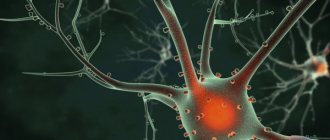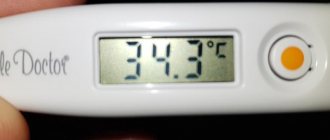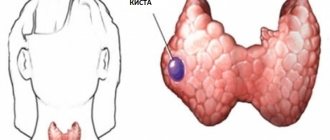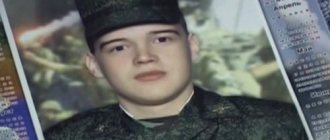Whether someone with VSD (diagnosis of vegetative-vascular dystonia) is accepted into the army depends on the clinical picture. Vegetative-vascular dystonia is not a separate disease; this term refers to a complex of symptoms that negatively affect overall well-being and the functioning of internal organs and systems. VSD has many manifestations of varying severity. In the Schedule of Diseases for Vegetovascular Dystonia, the conscript is not sent to the reserve, he is taken to serve with category “B”, “A”, but there are some nuances.
Vegetovascular dystonia general concepts
VSD is a polyetiological syndrome, which is characterized by dysfunction of the autonomic nervous system. The term VSD is outdated; in the International Classification of Diseases it is indicated as somatoform autonomic dysfunction of the nervous system - code F 45.3 [4]. Autonomic disorders are secondary, occurring against the background of mental, somatic diseases, with organic damage to the central nervous system, due to hormonal imbalance in adolescence, etc. In some cases, vegetative-vascular dystonia is an integral part of other, more complex diseases:
- hypertension, hypotension;
- cardiac ischemia;
- endocrine disorders, thyroid diseases.
VSD, as a secondary symptom, manifests itself in mental, nervous, and depressive disorders. The true cause of the pathology is unknown. Presumably – abnormal intrauterine development.
Factors influencing the occurrence of pathological processes:
- physical, emotional fatigue;
- frequent or prolonged stressful situations;
- chronic infection in the body - caries, tonsillitis;
- injuries;
- diseases of the endocrine and nervous system;
- intoxication;
- bad habits – alcohol, smoking;
- violation of sleep and rest patterns;
- unfavorable working conditions, excessive noise;
- poor nutrition.
Symptoms are of two types - general malaise, complaints about the functions of a particular organ. The psychological painful state is combined with physical discomfort. The main symptoms of VSD:
- increased sweating;
- trembling of limbs;
- headache;
- dizziness;
- weakness;
- chronic fatigue;
- lack of energy;
- increased heart rate, arrhythmia;
- dyspnea;
- redness, pallor of the skin;
- feeling hot or chills;
- slight increase in temperature;
- fatigue;
- bloating;
- nausea;
- fainting;
- belching;
- vomit;
- bowel dysfunction;
- apathy;
- weather sensitivity;
- hiccups;
- rapid breathing;
- impaired urination - difficult, frequent;
- joint pain.
Vegetative-vascular dystonia is often associated with low, high blood pressure, and heart pathologies. Depending on the characteristics of the symptoms and clinical picture, VSD is classified into mixed type, hypertensive, hypotonic, cardiac.
Do they take into the army with VSD?
There is no diagnosis of “vegetative-vascular dystonia” in the Schedule of Diseases. All conscripts are drafted into the army with category A, unless there are other health problems. There is a chance of receiving exemption and category “B”, “D” if vegetative-vascular dystonia is considered as a consequence of other more serious pathologies. If there is a violation of the functions of internal organs, the conscript may be granted release, but it is difficult to prove the seriousness of the situation.
Are they recruited into the army with a mixed type of VSD?
In this case, psychological and physiological disorders are combined. That is, a person complains of poor physical and emotional well-being. Symptoms disappear when unfavorable factors are eliminated and medications are taken that improve the functioning of the autonomic nervous system and brain. At best, you can count on a delay until the condition returns to normal.
Are they recruited into the army with VSD of the hypertensive type?
In the clinical picture of symptoms, problems with blood pressure come first. Poor health and dysfunction of internal organs occur as a result of increased blood pressure. There is dizziness, headache, heat in the face, body, intense sweating, weakness, etc. The condition normalizes when the indicators decrease. If vegetative-vascular dystonia is not associated with more serious diseases that are listed in the Schedule of Diseases, exemption from the army will not be given.
Are they recruited into the army with VSD of the hypotonic type?
The situation is similar to the previous diagnosis. Poor health is observed due to low blood pressure. There is weakness, headache, dizziness, fainting, drowsiness, decreased performance, etc. To treat the condition, tablets are used to increase blood pressure, vasodilators, sedatives, etc. With VSD of the hypotonic type, they are taken to serve unless the severity of the disease is proven, the frequency of relapses .
Do they take into the army with VSD of the cardiac type?
In this case, symptoms associated with the work of the heart appear more clearly - arrhythmia, shortness of breath, rapid heartbeat, pain on the left side, weakness, dizziness, etc. When diagnosing VSD, the work of the heart is examined, if no pathologies are detected, the conscript is taken to serve with category “B” ", minor restrictions on service.
Why is VSD syndrome dangerous when serving in the army?
Are they allowed into the army with this diagnosis? Unfortunately yes. And this happens quite often. Although the presence of VSD, even in a mild form, not to mention moderate and severe, can lead to many negative consequences:
- obstruction of capillaries and small vessels;
- progression of heart abnormalities;
- spatial disorientation may occur;
- hearing and vision loss;
- chronic pain of internal organs;
- disorders of brain activity;
- frequent fainting;
- loss of strength, which can lead to hypoglycemia.
A conscript is considered unfit for military service if, with arterial hypertension, the systolic pressure is not less than 140 mm Hg. Art., and diastolic is in the range from 90 to 100 mm Hg. Art.
Do they take into the army with VSD and panic attacks? Most often yes. But if the conscript is declared fit for service, then in this case the military weapon in his hands will become dangerous not only for his colleagues, but also for civilians. In a panic attack, a person is overcome by such fear that he cannot be held accountable for his actions. And this is one of the signs of VSD.
Fitness category for VSD
Vegetative-vascular dystonia is not a reason for exemption from the army. A conscript with this diagnosis is assigned fitness category “B” and sent to serve with some restrictions on the type of activity and troops. It is possible to obtain exemption, category “B”, “D” in the following cases:
- VSD of the hypertensive type is combined with hypertension. Blood pressure at the time of examination is above 140 mm Hg. Art.
- VSD of the hypotonic type is accompanied by frequent exacerbations - once a month, fainting. Facts of loss of consciousness should be recorded in the medical record.
- VSD of the cardiac type is combined with serious cardiac dysfunction - arrhythmia, tachycardia, failure, etc.
If a violation of the functions of internal organs and systems is proven, the conscript is given release. It is very difficult to achieve this; there must be a whole folder of diagnoses for related diseases.
Types of disease
Vegetovascular dystonia can be of four types:
- Hypertensive. In this case, the pressure is constantly increased, and the head often hurts. The patient experiences constant and sudden changes in body temperature. Heavy sweating may occur, the face may become red, or the skin may become marbled in color.
- With VSD of the hypotonic type, the army may be contraindicated. Since the patient has low blood pressure, weakness, drowsiness and dizziness appear. Loss of orientation and sudden fainting are possible. Especially when changing vertical and horizontal positions.
- Cardiological. This type of pathology manifests itself in patients suffering from tachycardia, arrhythmia or heart pain. When examining the reasons that could lead to VSD are not identified.
- Mixed. It combines partially or completely the symptoms listed above.
How to properly search for conditions for enlistment in the reserves
The Schedule of Diseases contains articles 24, 47, according to which you can receive fitness category “B”, “D” in the presence of vegetative-vascular dystonia. Article 24 talks about vascular diseases of the brain and spinal cord. Assigned category B, B4. Young men who experience exacerbations every month are accompanied by fainting and require long-term treatment can receive exemption. The difficulty lies in the fact that the fact of fainting must be recorded by doctors, that is, the person must lose consciousness in their presence. In a pre-fainting state, a patient does not always try to call doctors, and loss of consciousness is a matter of minutes.
Article 47 “Neurocisculatory asthenia”. This article discusses vascular diseases. Whether a conscript will be accepted into the army depends on the severity of vegetative-vascular disorders. This includes unstable low or high blood pressure that has not responded to treatment within 6 months. Cardialgia with severe arrhythmia, tachycardia, requiring hospital treatment.
In other cases, the conscript is assigned fitness category “B”.
Military medical commission at the VSD
We explained what it is in simple language. This is not a disease, but a syndrome. Therefore, if a medical examination before the army reveals the presence of VSD, then the conscript is sent for a more thorough examination to establish the cause that caused the symptoms. Among the doctors who examine young men before service are a psychiatrist and a neurologist. And if doctors previously diagnosed VSD, it is necessary to report this to the medical board.
It can confirm that the syndrome is mild and the conscript can be sent to the army. But the fact is that VSD is a manifestation of a specific disease. And often abnormal loads may not improve the conscript’s health, but, on the contrary, worsen it. Even dangerous exacerbations of the disease are possible.
How to document a diagnosis
Suspicion of any disease is based on the patient’s complaints, but to confirm the diagnosis, it is necessary to undergo a full examination.
The following symptoms must be present:
- cardialgia;
- respiratory manifestations – shortness of breath, nervous cough, etc.;
- tachycardia;
- asthenic syndrome;
- psycho-emotional disorders;
- fluctuations in blood pressure;
- cardiac arrhythmia.
Examination methods:
- ECG monitoring
- blood pressure measurement
- Ultrasound of the heart, large vessels
- stress tests to determine the adequacy of the cardiovascular system’s response to physical activity
- study of external respiration functions (spirometry);
- gastroscopy;
- radiography of the OGK;
- Ultrasound of the abdominal organs;
- laboratory tests of blood, urine, feces;
- study of the functional state of the brain (electroencephalography).
The diagnosis is established after a thorough, comprehensive examination, excluding other pathologies of the blood vessels, heart, stomach, intestines, etc.
In addition, in order to prove the severity of the disease, each time you feel unwell, you must seek help from specialists, make sure that symptoms, treatment, fainting, and other important points are recorded in the card.
Reviews
Dear readers, was this article helpful? What do you think about the diagnosis of vegetative-vascular dystonia and military service? Leave feedback in the comments! Your opinion is important to us!
Andrey
“With vegetative-vascular dystonia, getting category “B” is unrealistic. It’s faster to serve than to prove the severity of the disease.”
Oleg
“I have had VSD since I was a teenager. Frequent headaches and weakness. I went through all kinds of examinations, no pathologies were found. They write in conclusion - healthy. In the army I often felt unwell, but I served.”











